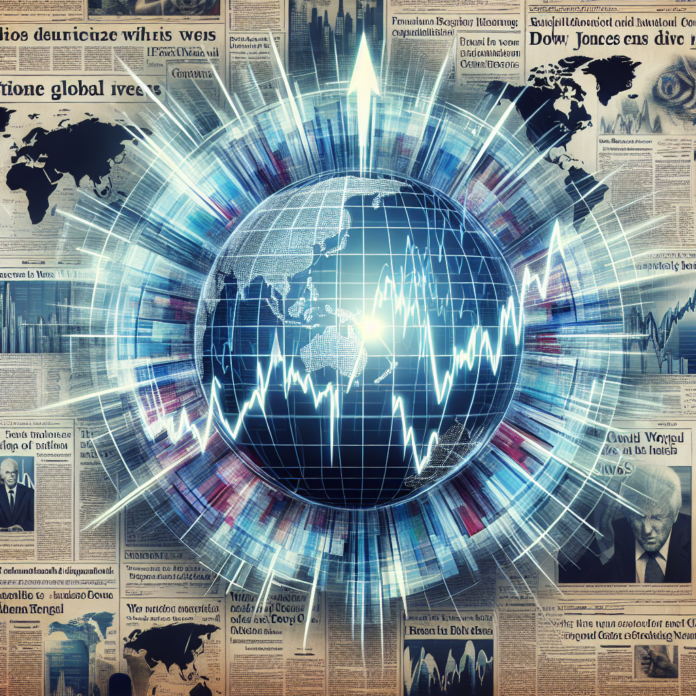The Dow Jones Industrial Average (DJIA), known as “the Dow,” is more than just a stock market index. It is a mirror reflecting the impact of global events and crises on the economic landscape. Time and again, the Dow has served as a financial seismograph, recording the tremors of geopolitical instability, economic upheavals, and societal shifts. In this exploration, we delve into the Dow’s reactions to significant global occurrences throughout history.
The Great Depression and the 1929 Stock Market Crash
The devastating crash of 1929 signified the beginning of the Great Depression, one of the most severe economic downturns in history. As analyzed by The Federal Reserve History, the Dow plunged dramatically, losing nearly 90% of its value from its peak to its nadir. This era exemplified how deeply interconnected the stock market and global economic health truly are.
World War II and Post-War Recovery
The tumult of World War II had a profound impact on global economies, with the Dow experiencing significant volatility as nations grappled with uncertainty. Following the war, as documented by resources like The Balance, the Dow not only recovered but embarked on a long bullish run, reflecting the post-war economic boom fueled by industrial expansion and consumer optimism.
The OPEC Oil Embargo of 1973
The 1973 OPEC oil embargo triggered an energy crisis that sent shockwaves through the global economy. This period saw the Dow drop sharply as inflation soared and economic growth sputtered. Investopedia offers a comprehensive look at the embargo’s direct consequences on stock markets, illustrating the Dow’s vulnerability to energy supply shocks and geopolitical events.
The Dot-Com Bubble and the Early 2000s Recession
The late 1990s were marked by the rapid growth of internet-based companies, leading to excessive speculation and the formation of the dot-com bubble. As CNN Business chronicles, when the bubble burst in the early 2000s, it precipitated a market downturn, with the Dow experiencing significant declines, signaling the index’s sensitivity to sector-specific exuberance and corrections.
The 2008 Financial Crisis and The Great Recession
The 2008 financial crisis, sparked by the collapse of the housing market, led to a steep downturn known as the Great Recession. The Dow responded by plummeting, losing over 50% of its value from its 2007 high to its 2009 low. MarketWatch detailed the market movements during this period, noting how the index reflected the deep-rooted issues within the financial system and the global economy’s interconnectedness.
COVID-19 Pandemic and Market Volatility
The COVID-19 pandemic presents the most recent example of the Dow responding to a global crisis. In February and March of 2020, as the severity of the pandemic became apparent, the Dow suffered swift and steep losses. Organizations like Reuters reported on these unprecedented moves, noting that the rapid interventions by governments and central banks globally led to a remarkable, albeit uneven, market recovery.
Conclusion
The Dow Jones Industrial Average’s history is a testament to its resilience and its function as a gauge for investor sentiment during times of global crises. From economic collapses to geopolitical conflicts and health emergencies, the Dow has weathered numerous storms. By examining its historic reactions, investors and analysts can better understand the forces that shape market dynamics and prepare for future volatility caused by global events.
Tags: #DowJonesIndustrialAverage, #StockMarket, #GlobalCrises, #EconomicHistory, #MarketVolatility, #GreatDepression, #DotComBubble, #FinancialCrisis, #COVID19Pandemic, #FederalReserveHistory, #TheBalance, #Investopedia, #CNNBusiness, #MarketWatch, #Reuters




 AGF-B.CO
AGF-B.CO